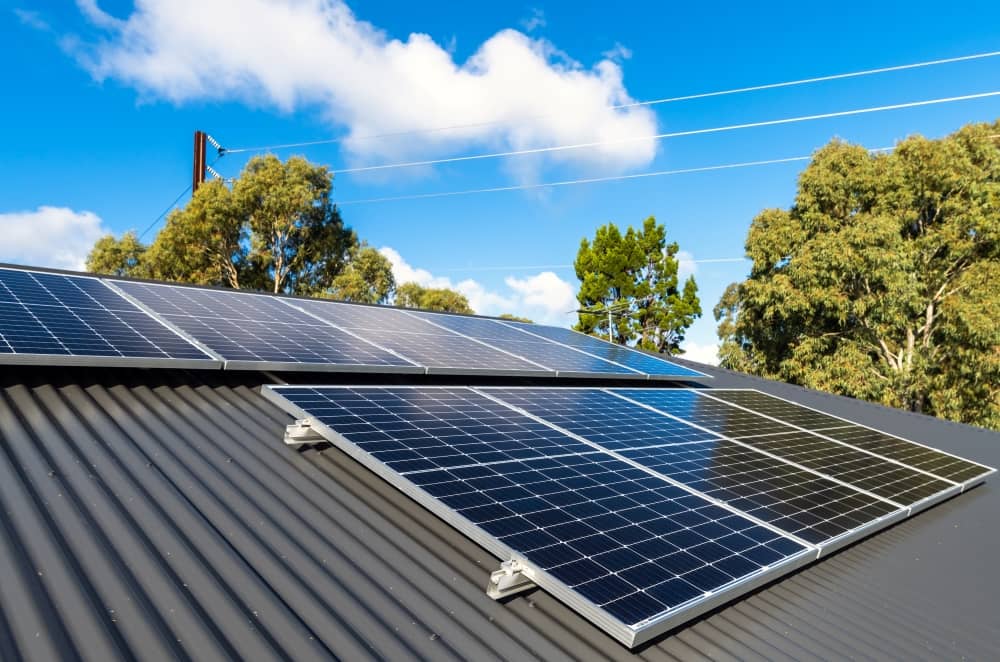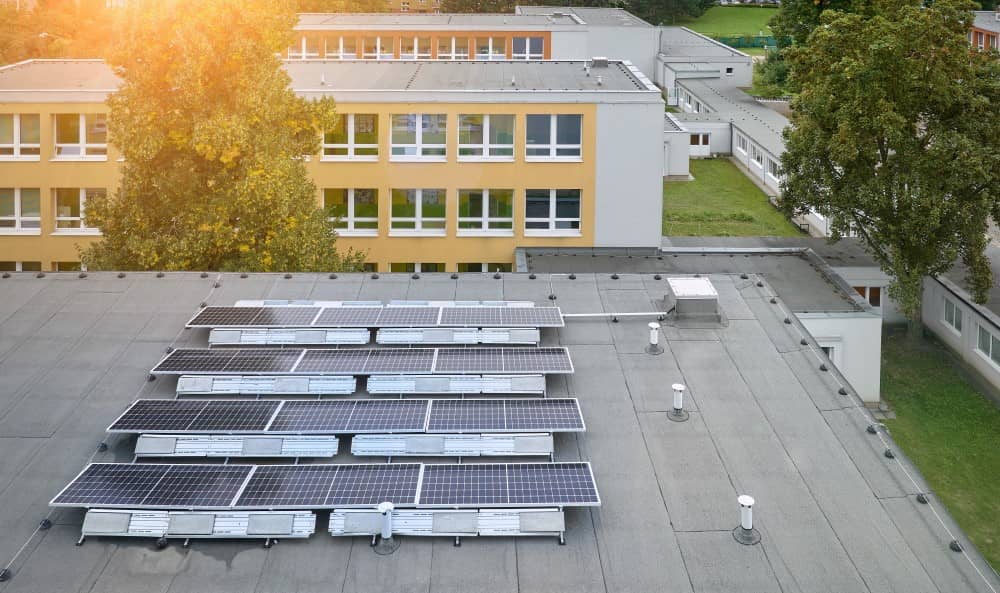More and more Australians are eager to contribute to a sustainable future. Some even want to live off the grid as they switch to renewable energy systems, such as solar. 2021 was the country’s record-breaking year for rooftop solar. According to Clean Energy Regulator data, more than three million homes and businesses installed a solar system, resulting in 2.88 gigawatts of power added to the grid.
If you are thinking about going solar, one of the most important questions that need an answer is regarding the size of your solar system. The solar panel market offers a variety of solar panel sizes and capacities. So, which size best fits your home and your needs? Let’s help you find out.
What Size & Capacity Mean in Solar
Solar size refers to the capacity of the solar photovoltaic system, determined by its maximum electricity output. So, don’t get confused and associate size with the number of panels. You can have 24 250-watt panels or 20 300-watt panels. Either way, you have a 6000kW system.
For simplicity’s sake, think of it as the overall capacity of the solar system and is expressed in kilowatts (kW).
When buying a solar system, you will most likely be given a quote for an “oversized” system or something beyond what your household requires. That’s because you get more bang for the buck if you add an extra 33% of solar panels than what your inverter is rated for. For example, if you have a 5kW inverter, we recommend that you install a 6.6kW system. A reliable solar installer will help you determine the correct size.
Nevertheless, it’s essential to be informed regarding solar system sizing so you don’t end up getting too much or inadequate capacity. Here are some helpful tips to figure out the best solar size for your home:
How Much Energy Do You Use?
It’s impossible to have the correct solar PV system size without understanding your current (and future) electricity usage. Here’s an easy way to do it:
- Gather your electric bill, ideally a full 12 months of usage, to see the peaks and valleys in electricity usage. This way, you see the spikes, which typically appear in the winter and summer, thanks to the heavier use of cooling and heating units.
- Add the whole year’s kWh usage and divide the answer by 12 to determine your monthly consumption.
- Finally, get your daily kWh usage by dividing your number from the second step above.
The rule of thumb is to divide the daily electricity consumption by 3.5 (sometimes 4, depending on your area). That’s because a 1kW solar system can produce 3.5kW to 5kWh of electricity daily. Therefore, if your current daily electricity usage is 12kWh, it’s suggested that your solar system size is 3.4kW. For homes using 20kWh of electricity, a 5.7kW system may be sufficient.
Make sure to consult with a solar installer to devise a more accurate estimate based on your home’s energy requirements.
Know Your Home Size and Orientation for a Solar Install
It’s critical to determine how many square metres your home is, along with its orientation and the pitch of your roof. A four-bedroom house has different requirements than a small one-person home. On average, Australian homes utilise 15 to 20kWh daily. This varies depending on your area, the number of people in the house, and your appliances, among others. Generally, a single-person home only uses 8kWh per day, but a four-person household can consume up to 40kWh daily.
Another thing to consider is the solar panel size. Can your roof accommodate 20 panels? A common misconception is that solar panels are of the same size. Typically, the bigger the size, the more solar cells the panel has. So, if you have a 60-cell panel, it’s smaller than a 72-cell panel. Remember, though, that the capacity does not rely entirely on the size. Therefore, a small 60-cell panel with 20% efficiency can generate more electricity than a 72-cell panel with 15% efficiency.
To compare the sizes of the standard solar panels, we generally have the following:
- 60 cells: 164cm (64.5in) long x 99cm (39in) wide
- 72 cells: 196cm (77in) long x 99cm (39in) wide
- 96 cells: 159cm (62.6) long x 105cm (41.5) wide
Now that you know the typical solar panel sizes, you can figure out how many can fit on your roof. Ideally, installing panels on a north-facing roof is best to get the most out of your solar system. That’s because Australia is in the southern hemisphere, which means that a north-facing location maximises the time panels receive solar energy every day.
For Perth homes, North angled 30 degrees horizontally can give you up to 100% energy, compared to West angled 30 degrees, which gives 85%. Avoid south as it can result in just 65% efficiency.
Don’t forget about your roof space. If you have a small roof, you’re restricted to the solar system size you can have. For example, your 6.6kW system with 390-watt panels will fit in a 29-square-metre roof space. That is if one panel is 1.7 square metres. Meanwhile, a 10kW system with 25 390-watt panels needs 43 square metres of roof space.
If you require more capacity, you may have to pick panels with more cells or higher wattage, such as 400 watts.
How Much Does the Location of Your Home Matter?
At the minimum, your solar system should cover the entirety of your household consumption on a typical day. If you consume 20kWh on most days and 30kWh on rare occasions, it doesn’t make sense to add extra to cover those exceptions. In this case, a 5kW system will work for you. You’ll just have to accept paying more on days when you require additional power. All these numbers, though, can vary greatly depending on where you live. That’s because the peak sunlight hours directly impact the energy your solar system can produce.
If you live in Perth, there are more peak sunlight hours than in other cities on most days. Perth, being the sunniest Aussie city, is said to have 3,200 hours of sunshine in a year. Factor this particular detail into your solar system size by dividing your daily kWh energy consumption by the peak sun hours. This formula gives you the kW output. Then, divide the kW output by the panel’s efficiency factor to get the suitable solar system size.
For example, you have 6.1 daily peak sunlight hours and consume 33kWh. Here’s how to calculate the size based on sunlight hours:
(33kWh (daily) / 6.1 daily peak sunlight hours) x 1.15 EF = 6.2kW
Solar panels require exposure to direct sunlight for them to work. Therefore, you need to know the amount of daylight in your location unless you intend to use battery storage.
How Budget Can Affect Your Solar Package?
The upfront cost will, of course, be based on the size of the system you’re installing – meaning the total kW of solar panels. Other factors to consider are:
- Your location
- Local market competitiveness
- Panel brand
- Installer
- Specific issues, such as home access difficulty and roof orientation
Thankfully, solar prices in Australia have dropped significantly. Over a decade ago, you had to pay around $10,000 for 1kW solar panels. Today, you can get more capacity to accommodate a larger system for the same amount.
Despite the rumours that you may have heard, the solar rebate scheme is still ongoing. Therefore, buying a PV system in 2023 and beyond remains heavily subsidised by the government. The rebate does fluctuate depending on the small technology certificates (STCs). That’s a whole other topic, but to put things into perspective, you can look at about $396 of upfront savings per kW installed.
Do exercise caution when it comes to the subsidy. With the potential to change daily, STCs may not amount to much should the values dip. The solar rebate for Perth solar customers starts from $1,569, which is applied to 3.7kW solar systems (41 STCs). A bigger system will award you a more considerable subsidy. For example, installing a 6.6kW (73 STCs), a standard residential solar size, may qualify you for a $2,790 rebate.
Take your time buying solar, especially if you’re simply basing your decision on the subsidy value in your area. Ensure that you have an informed buying decision by considering all the factors, including the solar system’s life expectancy, efficiency, and requirements over STCs.
It helps to compare solar quotes before you purchase. When you call an installer and supplier, you will find that the quotes vary even when you’re getting estimates for the same size. A 6.6kW system, for example, is priced anywhere from $6,000 to $9,000. The total cost is usually dependent on the following:
- The installer’s reputation
- Tier 1 panels
- CEC approved panels
- Warranty for the panels and installation
Aside from the panels, don’t forget to look into the quality of the inverter. It works like the solar system’s engine room; therefore, we recommend placing the bulk of your investment on the inverter. It is also the component that typically breaks down first. Always look for the best inverter that your money can buy so that it lasts longer and has higher efficiency.
Plan Ahead With Your Solar
Five or even two years from now, your electricity usage will change. You may be starting a family or have kids who are growing up quickly. Therefore, your household will require more power. Perhaps you plan to switch to an electric vehicle, which needs to be recharged. You can save more on your electricity consumption if you choose to go solar.
You may also be among the numerous Australians with solar who plan to add battery storage to supplement their system. Or, you may be interested in moving away from any gas usage and transitioning to an all-electric home. It also helps to know power-hungry appliances and devices, which include:
- Air conditioners
- Spas
- Pool pumps
- Fish tanks
- Dishwashers
- Washing machines
- Dryers
So many things can happen in a few years, which is why it is always a good idea to prepare now. Future-proofing your home includes your solar system. Electricity prices will continue to soar, making the switch to a renewable energy source more attractive than ever. And in most cases of solar power systems, bigger is better, especially considering the pay-off for the long term.
Do You Need Help with Sizing Your Solar System?
Even with all your research, nothing can beat an expert’s advice. Talk to us to make your solar sizing experience so much easier. We’ll walk you through the design process, which includes double-checking solar sizing and finding the most compatible solar products for your home.




